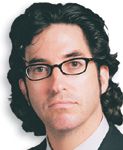Article
Genetics playing larger role in male infertility
It's safe to say that when the sequencing of the human genome wascompleted in April 2003, the diagnosis and treatment of maleinfertility was turned on its ear.
It's safe to say that when the sequencing of the human genome was completed in April 2003, the diagnosis and treatment of male infertility was turned on its ear.
"We're in this really interesting time in medical history when we have the blueprint of a human, but we haven't yet gone through and figured out all 30,000 genes and their regulation within that blueprint," said Craig S. Niederberger, MD, chief of andrology at the University of Illinois, Chicago. "We can expect that as the genome is more fully understood, the genetic basis of male reproductive dysfunction will be better understood."

Research being presented at the AUA annual meeting in Atlanta is expected to show that intracytoplasmic sperm injection-conceived children of men with triplet repeat DNA expansions may inherit unstable alleles leading to certain neurodegenerative diseases.

Cystic fibrosis gene mutations are also known to cause anomalies of the male reproductive tract, including congenital absence of the vas deferens and epididymal obstruction. New research correlating the exact genotypes of CF mutations with their clinical manifestations will have important surgical implications for urologists, according to Dr. Niederberger.
In the lab, investigators trying to more accurately characterize the genetic basis of male infertility have honed in on large deletions of the Y chromosome, particularly azoospermia factor-c (AZFc).
One deletion involving a small section of the AZFc region, known as the gr/gr deletion, may have a negative effect on spermatogenesis, though the specific effect is unknown and gr/gr deletion has not been shown to be an independent risk factor for male reproductive dysfunction.
Still, it's not only genetic abnormalities that may cause infertility. Polymorphisms, normal genetic variations one would expect to see, could also reflect variations in male productive potential, according to other data to be reported at the AUA meeting.
Genetics may also play a part in the formation of varicoceles. Researchers are finding that varicoceles are associated with DNA damage, so as tools to assess sperm DNA become available, clinicians will be better able to understand the negative effects of varicoceles on sperm and male fertility, Dr. Niederberger says.
Surgical advances
Surgical therapy has long been used in the treatment of varicoceles, but the most efficacious approach is still a matter of debate. Dr. Niederberger noted ongoing research into varicocelectomy, including upcoming data suggesting that bilateral varicocelectomy is superior to unilateral repair in terms of semen parameters and pregnancy outcome.
Urologic surgeons performing vasovasostomy will want to take note of new evidence from Korea touting the benefits of microsurgical vas reconstruction. It has been found that the microsurgical technique, while more expensive and taking longer, is still superior to loupe-assisted, one-layer vasovasostomy.
"That's immediately practical information for urologists," said Dr. Niederberger. "If you're going to reconstruct, use a microscope."
Building on the pioneering work of Peter Schlegel, MD, other researchers are confirming the role of aromatase inhibition therapy in the treatment of male infertility. Specifically, an aromatase-inhibiting agent called anastrozole appears to have a positive effect on spermatogenesis.




